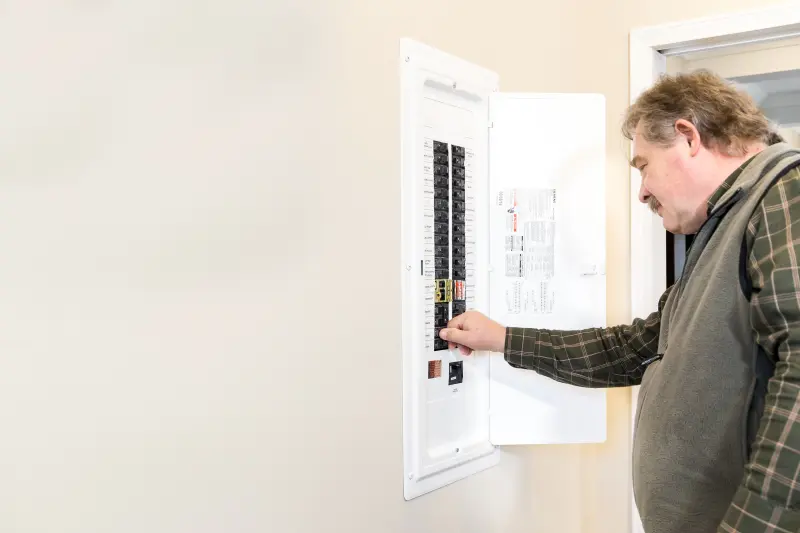What to do if Your Circuits are Overloaded
Inside the service panel, the tripped breaker will be in the middle position. Before you reset the affected breaker, make sure to turn off all items that are plugged into that circuit. To turn the power on, you should push the breaker switch all the way off and then back on.
Once the breaker has been reset, turn each appliance back on individually. If the breaker trips again, then the circuit is still overloaded. If this is occurring, it may mean that there are too many things plugged in. Items like microwaves or hair dryers especially require a large draw of electrical power. This could cause damage to both your appliances and your electrical systems.
To help this, turn off the breaker, go to the area where the breaker is tripping and unplug a few of the items. Turn the breaker back on to see if it trips again. If it does, try turning the breaker off one more time, and make sure to only have items plugged in that the electrical system can handle. If you continue to do this and the breaker keeps turning off, contact a local electrician to investigate the issue.

Testing Your Smoke Alarms
The smoke alarms installed throughout your home may have been wired into your electrical system, and it's important to test them as often as the manufacturer suggests.
To test a smoke alarm, press the "Test" button on the detector. If the alarm beeps, it's working, if it doesn't, your first step should be to check the batteries to see if they've lost their charge.
Replacing Batteries in Your Smoke Alarm
All wired smoke alarms have a set of backup batteries in case of a power outage. If the batteries have low power they'll make a high-pitched chirping noise, however changing them twice a year, or as often as the manufacturer recommends, is your best bet to avoid any problems!
If changing the batteries resolves the issue and the detector beeps when tested, your smoke alarm is working. If the alarm still doesn't emit a noise, you should have the smoke alarms checked to see if they're functioning properly.
Contact the home center where you purchased your home if you need assistance in finding someone to check your alarms.
Replacing Your Smoke Alarm
According to most manufacturers, smoke alarms should be replaced every 10 years. If your smoke alarm is more than 10 years old, it's a good idea to go ahead and purchase new alarms even if the battery still beeps when tested, as the sensor may have deteriorated.
Cleaning your smoke alarms is also important as dust and debris could clog the sensors that are necessary to detect smoke.
Following these tips will help increase the longevity and functionality of the electrical systems in your home! Remember, if you're unsure about anything related to the electrical systems in your home, minimize risk and contact a professional to look at it. For more ways to stay on top of home maintenance, check out our Home Care Guide tips."


